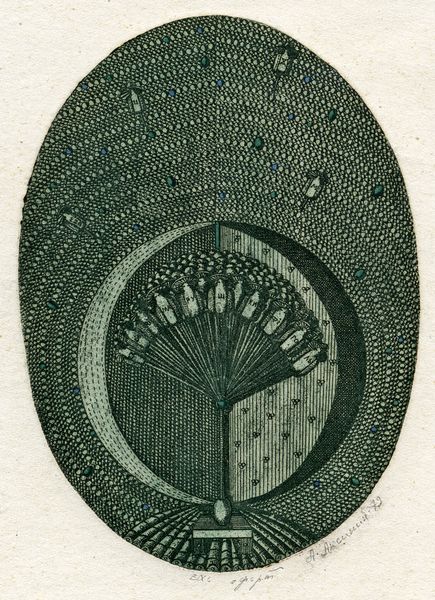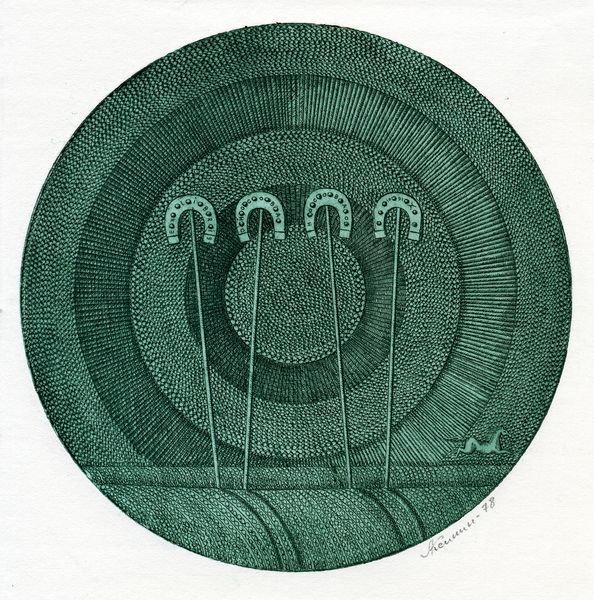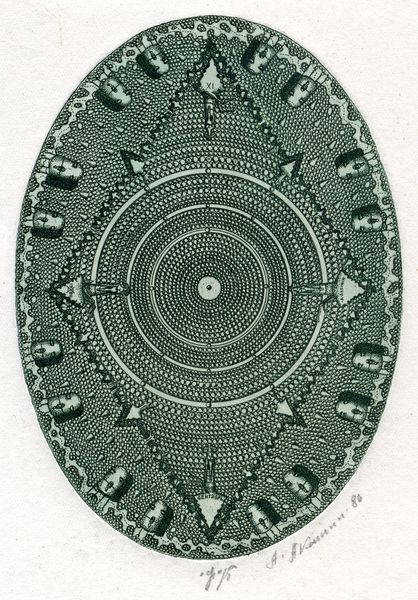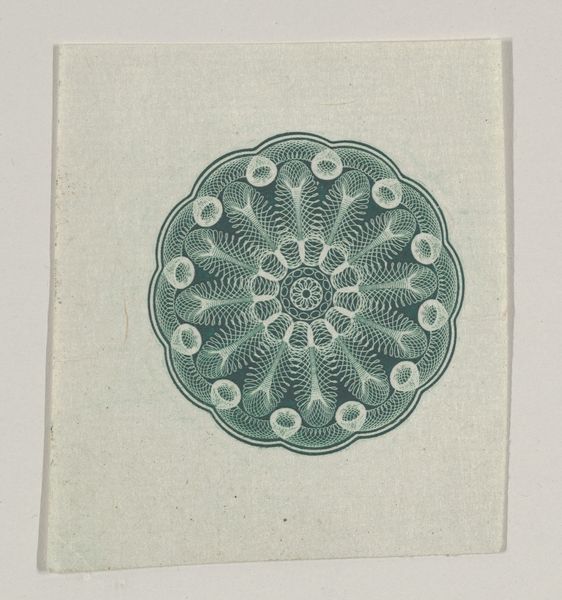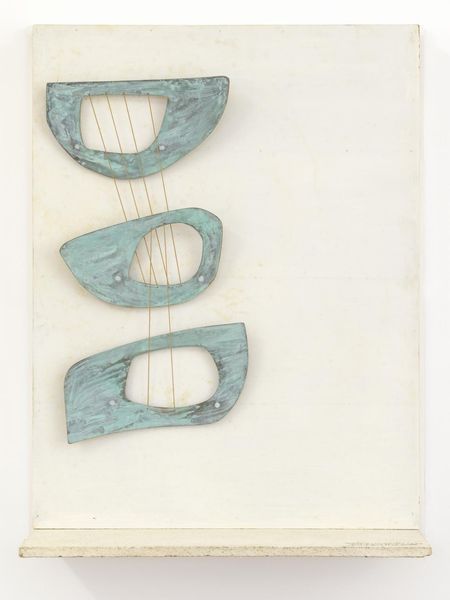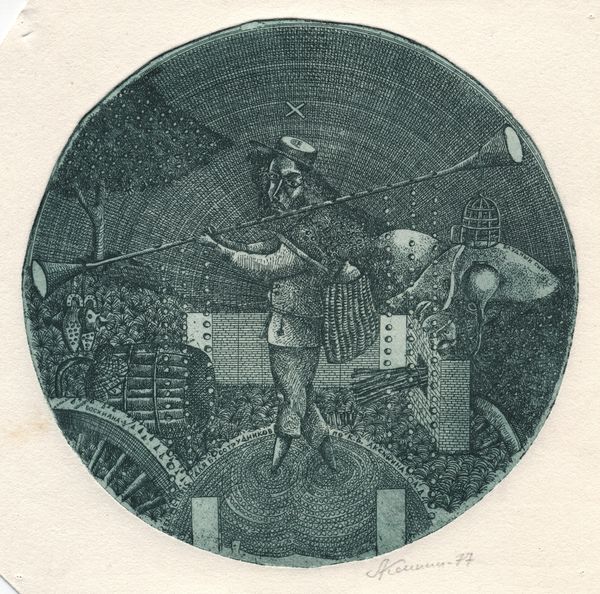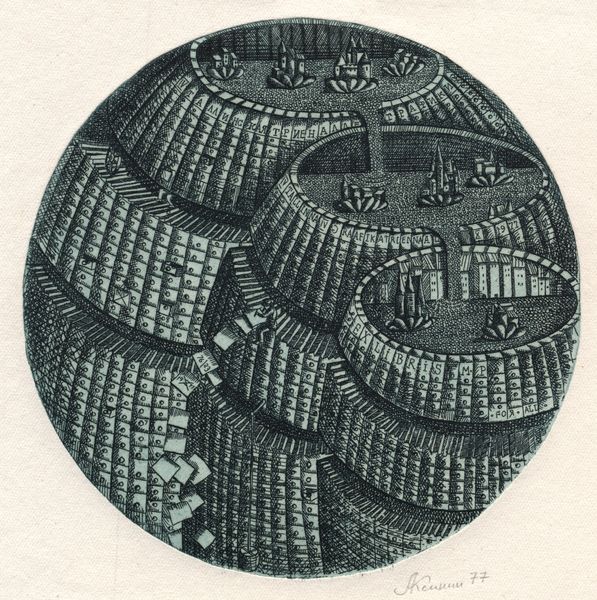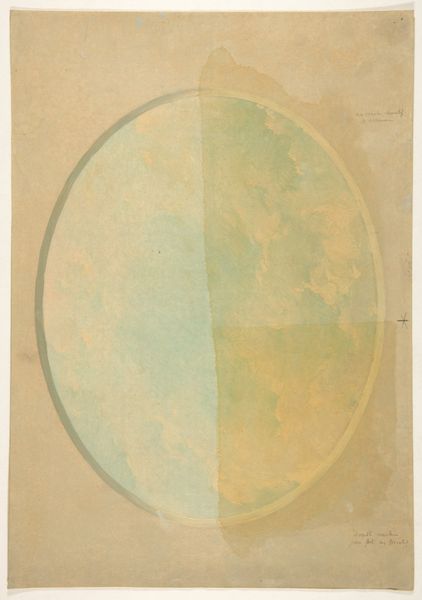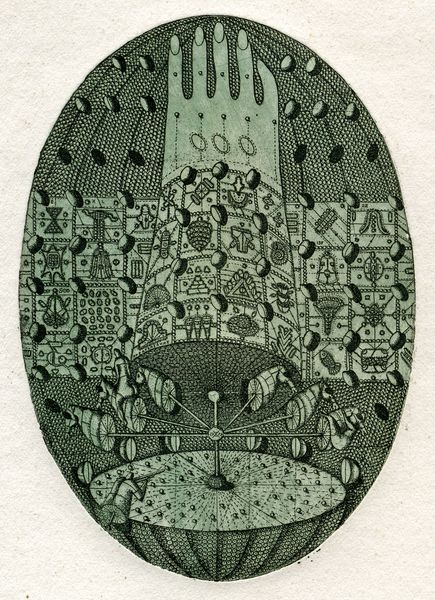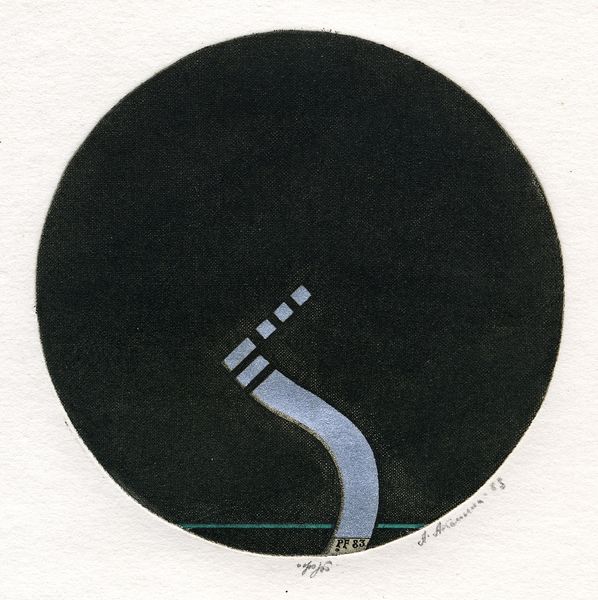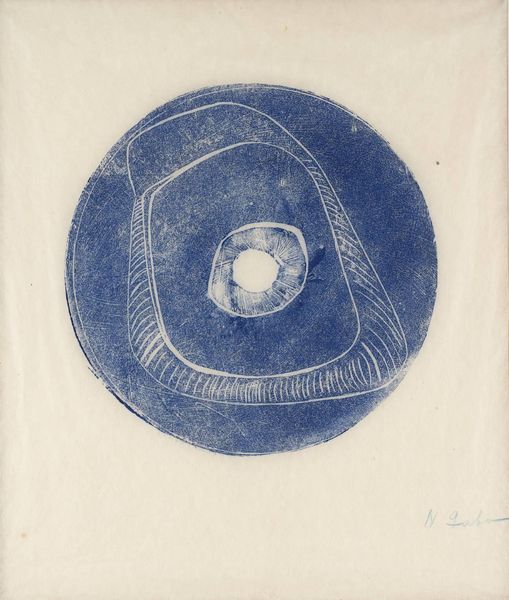
graphic-art, print, etching
#
graphic-art
#
negative space
# print
#
etching
#
geometric
#
abstraction
#
line
Copyright: Oleksandr Aksinin,Fair Use
Editor: This delicate etching from 1978 is titled "Exlibris of Dashenka Prykhodko," and it's by Oleksandr Aksinin. The repeating pattern, contrasting with the crisp circles, feels really meticulous. How might we understand this piece in a broader historical context? Curator: This artwork presents a fascinating intersection of personal and political forces within the Soviet Ukrainian context. Aksinin's graphic art, especially his ex libris works – bookplates – offered a discreet, almost subversive space for individual expression. They served a very specific public role to mark a person's book. How does the visual composition reinforce this reading of cultural critique? Editor: Well, the geometric abstraction, while visually interesting, is also very different from socialist realism that was popular. The lettering also appears deliberately stylized. I wonder if the abstraction provides some cover for him. Curator: Exactly! Abstraction could be interpreted in multiple ways, potentially shielding Aksinin from direct censure. Moreover, consider the materiality: graphic art and printmaking allowed for wider circulation than, say, a large painting. Who was his audience, do you think? Editor: Perhaps a small, intellectual circle who appreciated the symbolism? Those who might understand the implicit critique. Curator: Precisely. So, we see Aksinin navigating the restrictive cultural landscape through coded artistic expression. Editor: That’s insightful. I was so focused on the aesthetics; I didn't realize the historical weight carried within such a small print. Curator: Understanding the sociopolitical environment illuminates so much about the art itself. The apparent simplicity actually disguises incredible layers of cultural meaning and subversive activity. Editor: It makes me appreciate the artwork even more. It highlights how art can serve as a form of silent resistance, reflecting specific institutional controls.
Comments
No comments
Be the first to comment and join the conversation on the ultimate creative platform.
